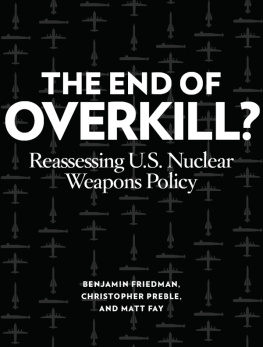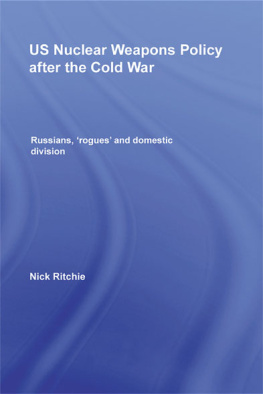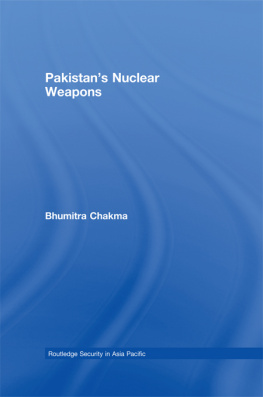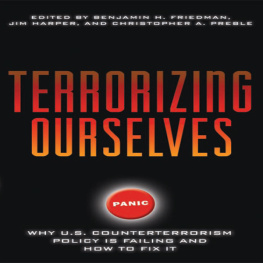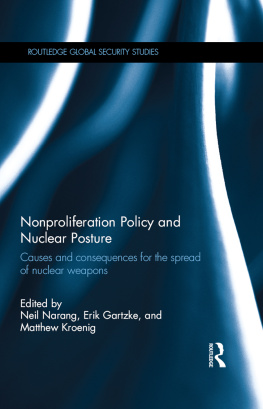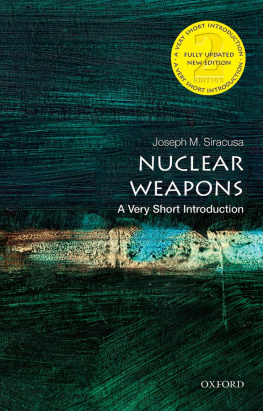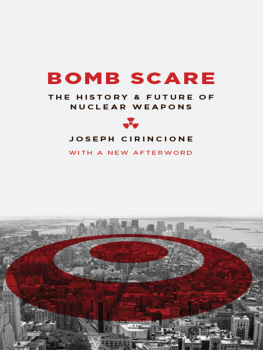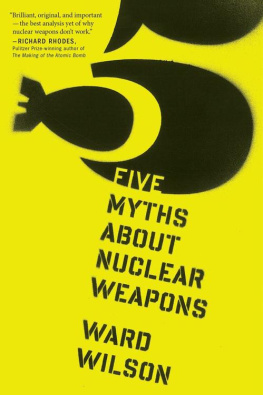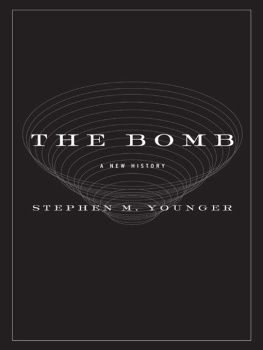Copyright 2013 by the Cato Institute.
All rights reserved.
Cover design by Jon Meyers.
Printed in the United States of America.
Ebook ISBN: 9781939709332
CATO INSTITUTE
1000 Massachusetts Ave., N.W.
Washington, D.C. 20001
www.cato.org
U.S. security does not require nearly 1,600 nuclear weapons deployed on a triad of systemsbombers, land-based intercontinental ballistic missiles (ICBMs), and submarine-launched ballistic missiles (SLBMs)to deliver them. A smaller arsenal deployed entirely on submarines would save roughly $20 billion annually while deterring attacks on the United States and its allies. A missile dyad is more politically feasible but saves less.
The triad grew from the military services competition to meet the Soviet threat. The arguments for it arrived to rationalize its components. The public rationale was a second strike: a diversity of delivery systems insured the nuclear arsenals survival against a Soviet preemptive attack. The more sophisticated rationale was a first strike: deterring Soviet aggression against European allies required the ability to preemptively destroy their nuclear forces.
Once competition between the Navy and Air Force diminished in the 1960s, they stopped denigrating each others nuclear delivery systems and began arguing for the triads necessity. That agreement prevented appreciation of the flaws in its justifications. The survivability argument exaggerated Soviet capability to threaten U.S. forces. The first-strike argument overlooked the accuracy gains allowing various weapons to destroy Soviet nuclear forces. And keeping the Soviet army out of Western Europe was never that hard; it did not require the ability to disarm their nuclear deterrent.
U.S. power today makes the case for the triad more dubious. Survivability is no longer a feasible justification. No U.S. adversary has the capability to destroy all U.S. ballistic submarines, let alone all three legs, and there would be time to adjust if that changed. Nuclear weapons are essentially irrelevant in actual U.S. wars, which are against insurgents and weak states without nuclear arsenals. Nuclear threats have a bigger role in hypothetical U.S. wars with nuclear-armed powers. But cases where the success of deterrence hinges on the U.S. capability to destroy enemy nuclear forces are far-fetched. In any case, U.S. submarines and conventional forces can destroy those forces. Even hawkish policies do not require a triad.
Nuclear weapons are no longer central to the identity or budget of the Air Force and Navy. Especially while austerity heightens competition for Pentagon resources, service leaders may see nuclear missions as red-headed step-children that take from true sons. That shift would facilitate major reductions in the nuclear arsenal, the elimination of at least one leg of the triad, and substantial savings.
Benjamin H. Friedman is a research fellow in defense and homeland security studies, and Christopher Prebleis vice president for defense and foreign policy studies, at the Cato Institute. Matt Fay is a student in the historyPhD program at Temple University.
Fear of mass destruction is crucial to deterrence, which has generally been the use of nuclear weapons. Their contribution to U.S. security then depends on the availability of circumstances where the United States might usefully threaten mass killing. Happily, those circumstances are rare and diminishing, and the forces required for them far fewer than what the U.S. military now operates. In particular, there is no good reason to maintain a triad of nuclear weapons delivery vehiclesbomber aircraft, intercontinental ballistic missiles (ICBMs), and submarine-launched ballistic missiles (SLBMs). Shifting to a submarine-based monad would serve U.S. deterrent needs and eventually save taxpayers roughly $20 billion a year, with the savings coming from delivery vehicles and support costs.
This paper encourages abandonment of the triad and skepticism about the received wisdom justifying U.S. nuclear weapons policies. We show how those policies have long rested on mythsabout U.S. force plans, enemy capability, and the difficulties of deterrenceinvented to manage Pentagon politics, placate allies and, to an extent, to bluff enemies. The first section examines U.S. nuclear policies during the Cold War, focusing on the triads origins and justifications. We then discuss how the triad overcame those intellectual flaws and survived. The second section shows how peace and relative U.S. power, especially the increased capability of missiles, have made the case for the triad even more dubious. We discuss why political support for nuclear weapons and delivery is weakening, and why the bomber leg of the triad is most politically vulnerable. The conclusion suggests restoring competition over nuclear missions and improving debate.
The triad developed during the Eisenhower administration as a result of competitionboth between the Cold War combatants and the U.S. military services. Dwight Eisenhower introduced the New Look strategy, which threatened to use nuclear bombs for massive retaliation against communist aggression in Asia and Europe. At least while the Soviet arsenal remained small and vulnerable to a U.S. nuclear strike, nuclear weapons offered a cheap, sustainable way of protecting allies.
The New Look privileged the Air Force.
The New Look also cost the Army and Navy status in the eyes of many of their officers, who worried about being unofficially subordinated to the Air Force.
The Navy initially focused on delivering nuclear weapons via aircraft based on carriers. It had failed in a bid for a nuclear-war fighting role in 1949 when the Truman administration chose to fund the Air Forces B-36, the first bomber with an unrefueled intercontinental range, rather than the supercarrier, which was meant to launch a naval bomber carrying nuclear bombs. That touched off the so-called revolt of the admirals, a public brawl between the administration and the Navy, which led to the firing or resignation of the secretary of the Navy, the chief of naval operations, and a number of high-ranking admirals. Still, because they had far less range and nuclear payload than the Air Forces B-47 and B-52 bombers, the Navys role in the New Look was secondary.
To regain budget share and relevance, the Army and Navy needed a bigger role in the main U.S. military mission of the day: defending Europe from the Soviet Union. They had two major assets in that struggle. First, ballistic missiles emergence as an alternative nuclear weapons delivery system threatened the Air Forces preeminence. Second, the Soviet arsenals growth frightened the U.S. public into supporting multiple delivery methods and undermined the credibility of the threat underlying the New Look, at least in the minds of many defense analysts. They argued that in a world of mutually assured destruction (MAD) massive U.S. retaliation in response to a Soviet invasion of an ally was suicidal and thus unbelievable. The alternative deterrence strategies that emerged to replace massive retaliation helped institutionalize the triad.
Bombers, Missiles, and Gaps
Bombers had several weaknesses as nuclear delivery vehicles, especially once the Soviets had their own nuclear forces. Their size and slowness exposed them to Soviet air defenses.
Eisenhower was skeptical about these estimates, as were many intelligence analysts. The real change coming, he understood, was that the United States would lose first-strike capability, not that the Soviets would gain it.


